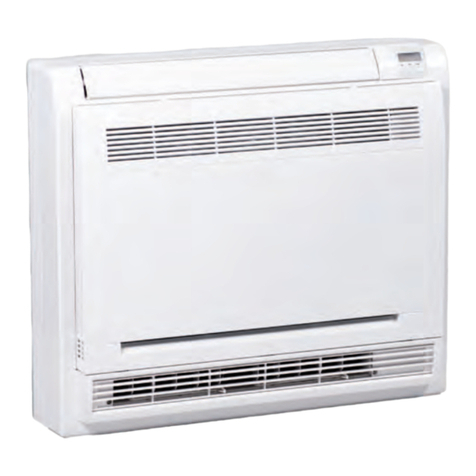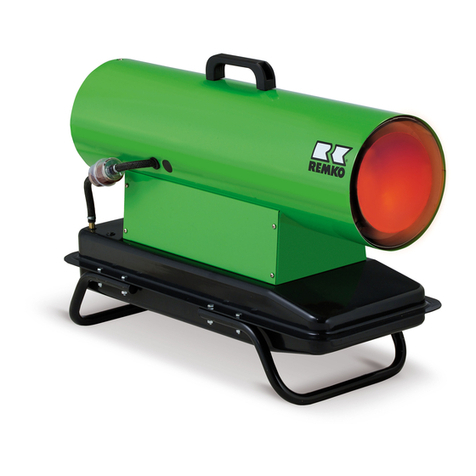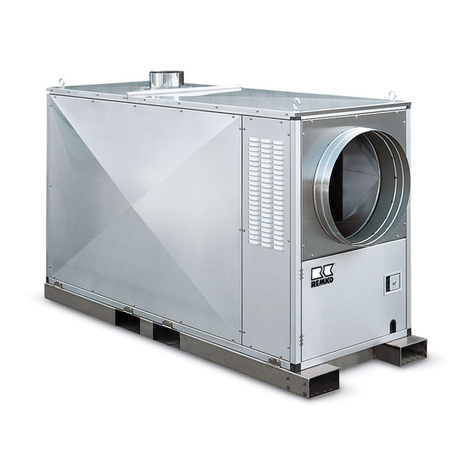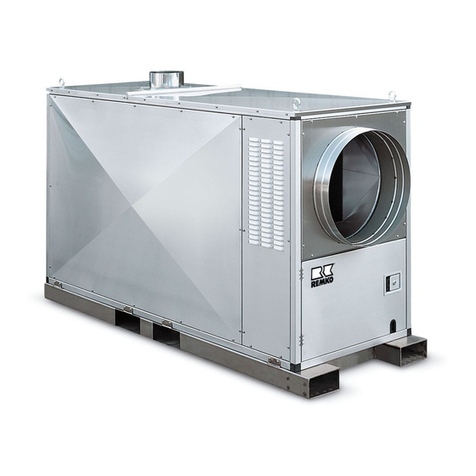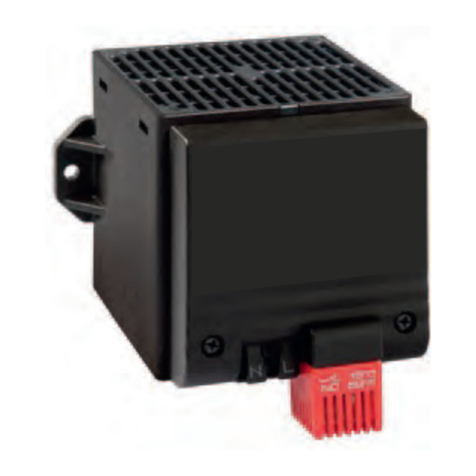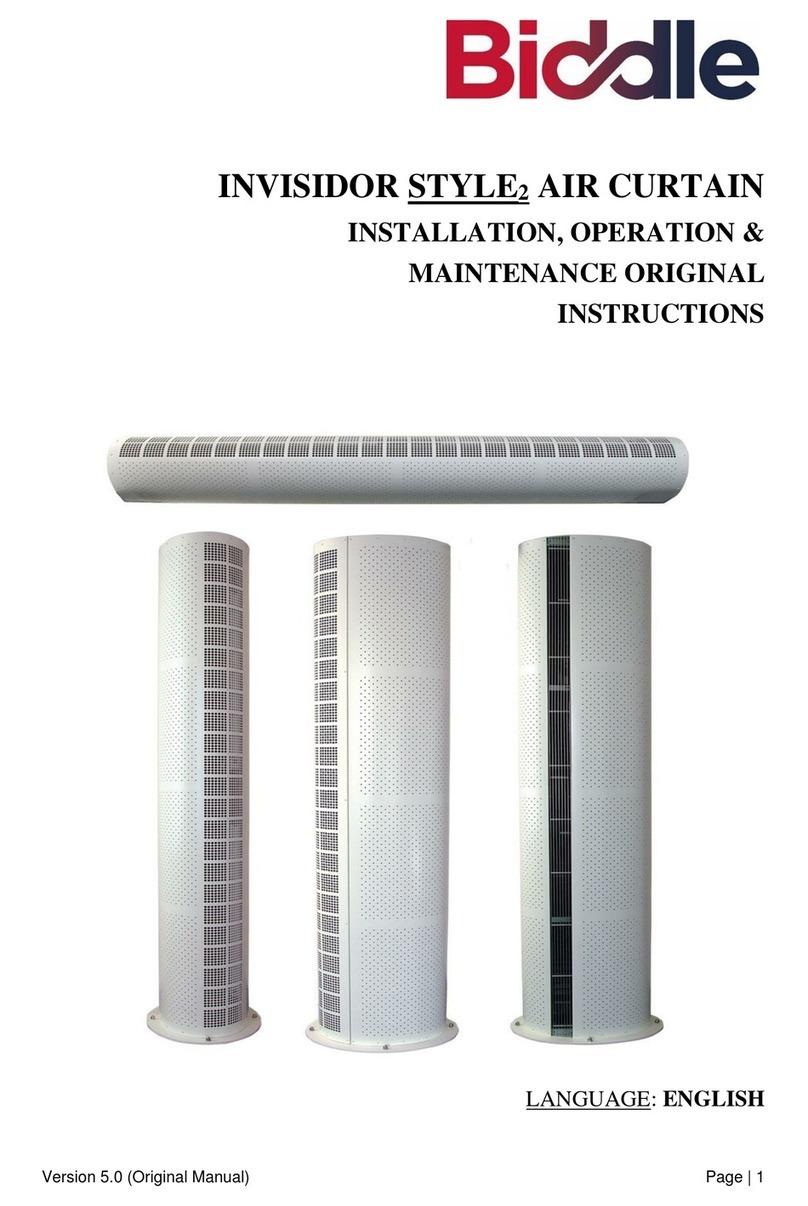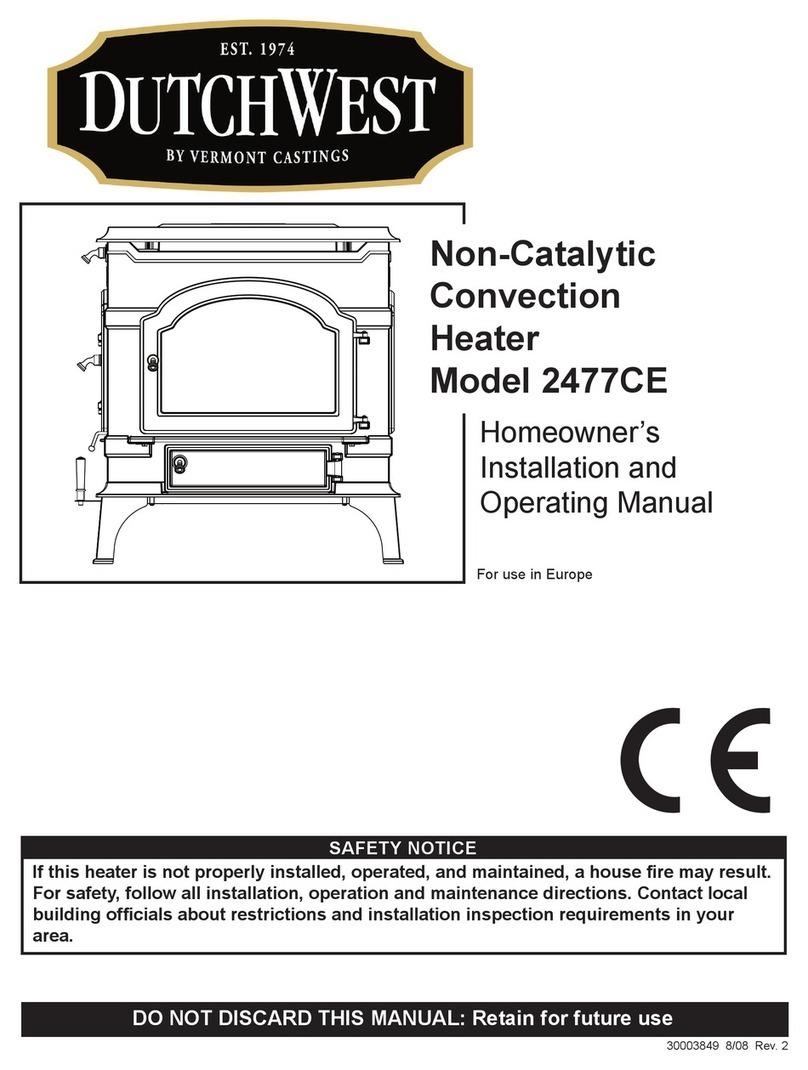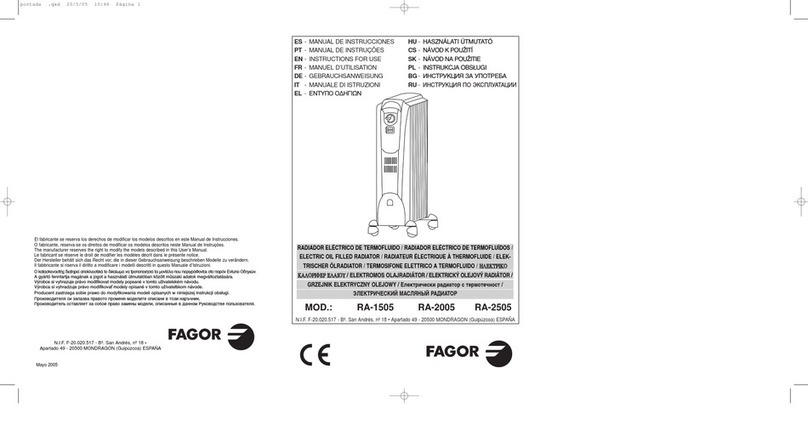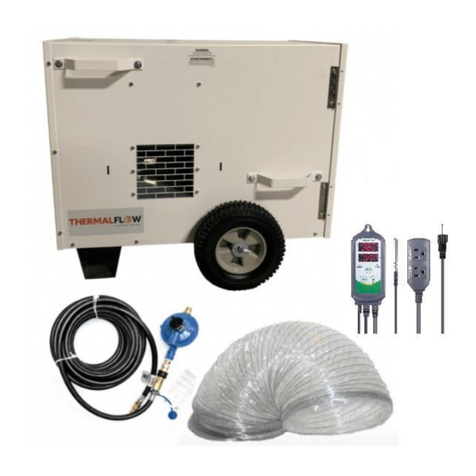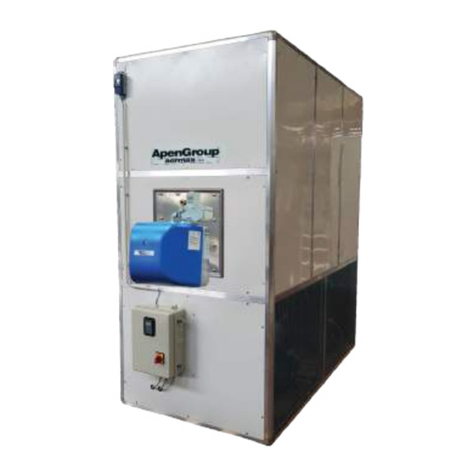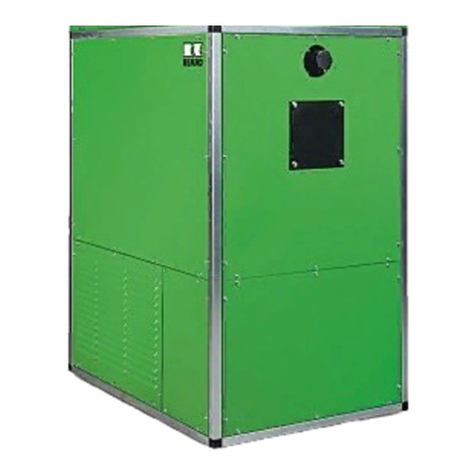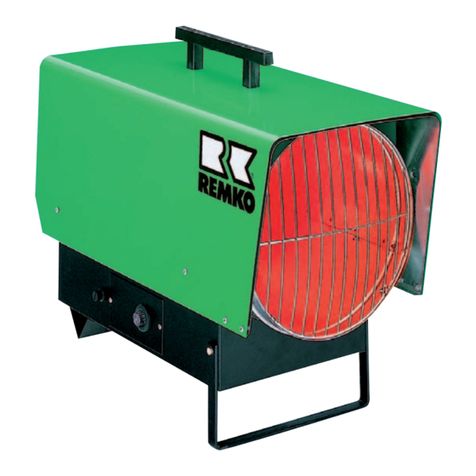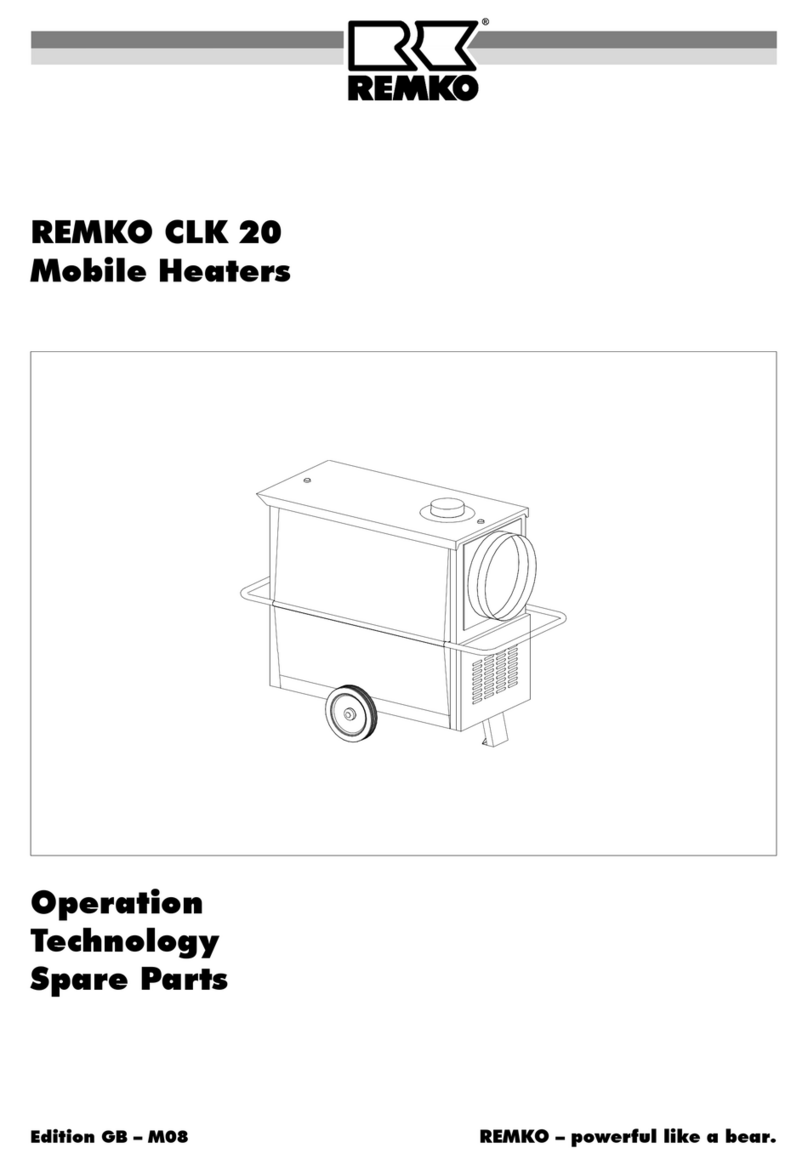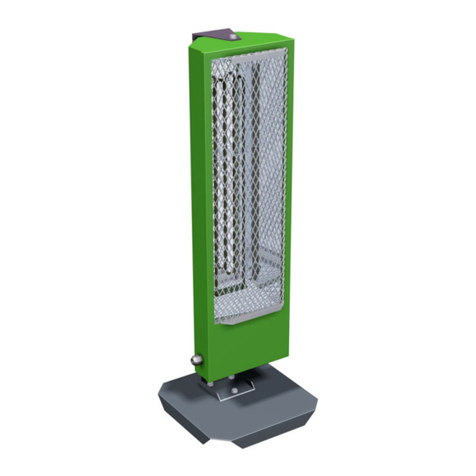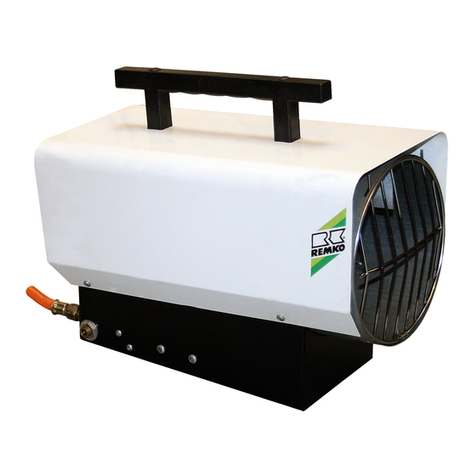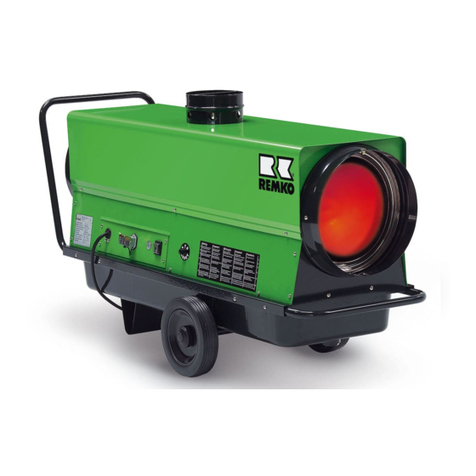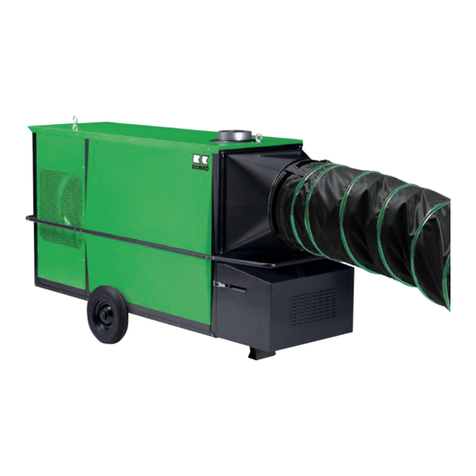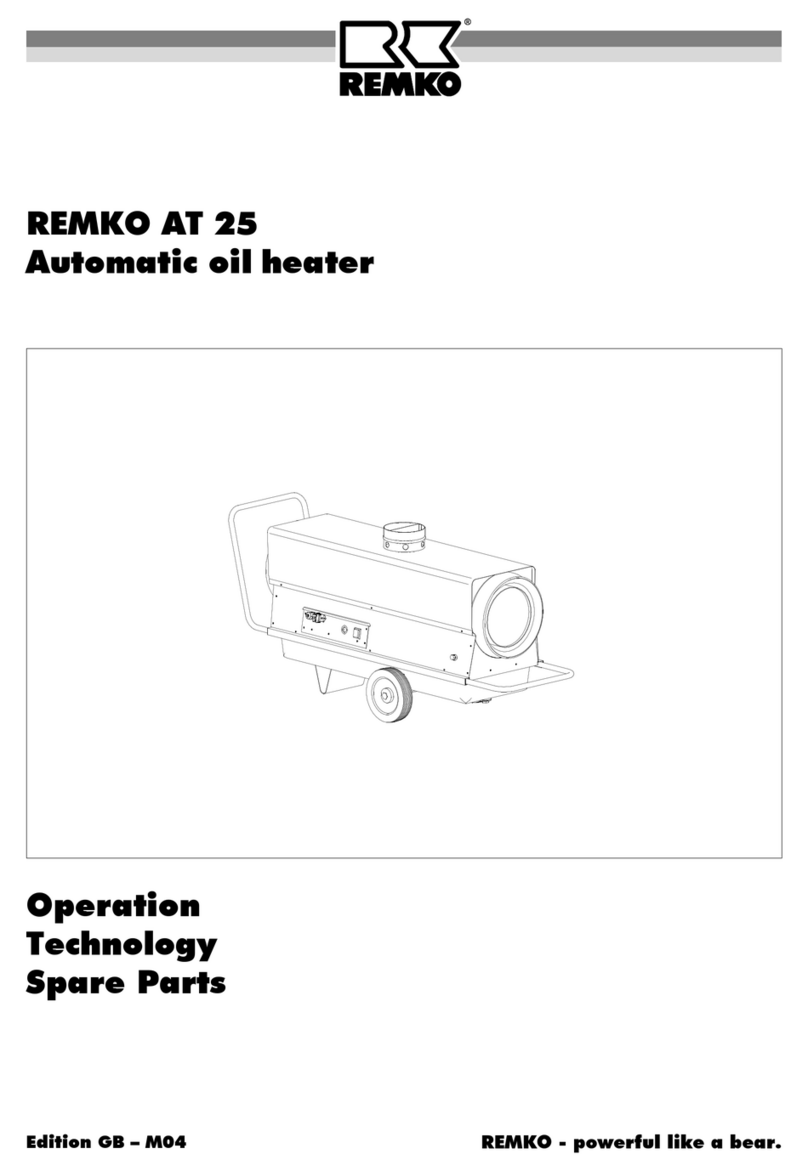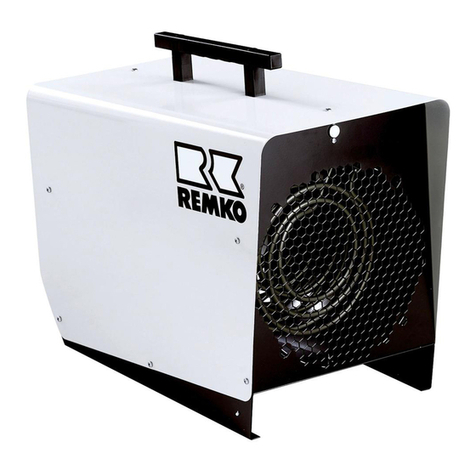
3
Saf et y Hi nt s
When using this unit make sure always to observe
the applicable building-and fire-protection regula-
tions as well as the rules of the trade cooperative
association.
•The unit may be operated only by those persons who
have been instructed accordingly.
•The unit is to be installed and operated in such a way
as to ensure that the employees are not endangered
by waste gases and radiation heat and that no fire
can break out.
•The unit may only be installed and operated in rooms,
when the air-rate fed to the unit is sufficient for com-
bustion.
•Mobile fuel reservoirs may be installed only when the
technical rules for combustible liquids “TRBF 210 and
280” are observed.
•Units without waste gas pipes my be operated only
in well aerated rooms.
•Persons are not allowed to stay permanently in the
room where the unit has been installed. Relevant pro-
hibition signs are to be fastened to the entrances.
•The unit is to be installed only on a non-combustible
ground.
•The unit may not be installed and operated in in-
flammable and explosive surroundings.
•A safety zone of 1.5 m around the unit and a mini-
mum distance of 3 m at the unit’s waste gas opening
are to be observed, even regarding non-combustible
objects.
•The protective air suction lattice is always to be kept
free from dirt and loose objects.
•Make sure not to introduce foreign matters into the
unit.
•Make sure not to expose the unit to direct water jets.
•All electric cables outside the unit are to be protected
from damage (e.g. caused by animals, etc.).
•Make sure always to pull the mains plug out of
the mains socket when maintenance and repairs
are carried out.
•An operation or use other than that indicated
in these operating instructions is prohibited!
In case of non-observation we will not be held
responsible and our guarantee will become void.
In st a l l a t i on Requi r e-
m en t s
The heaters may only be installed and operated in com-
pliance with the relevant regulations, especially regula-
tions governing the installation and operation of fire-
places and furnaces.
Operators
The units may be operated only by persons who have
been trained in this field.
Installation
Install the heaters in a stable position.
Install and operate the heaters so as to avoid any ha-
zard to the personnel by fumes and radiation heat, well
as to avoid any risk of fire.
The heaters may only be installed and operated inside
rooms if they are supplied with sufficient air for combus-
tion and if the flue gases escape into the open through
flue-pipes.
The air supply is sufficient for combustion when, for
example, the cubic capacity of a room is at least ten
times the nominal thermal load of all heaters in the
room, and a natural exchange of air is ensured by me-
ans of windows and doors.
Heaters without waste gas pipe may be used in rooms,
provided that these are well aerated and the percentage
of substances which are injurious to health in the brea-
thed in air do not reach inadmissible concentrations.
The airing is sufficient when, for example,
1. the room capacity in m³ is at least 30 times the nomi-
nal thermal load in kW of all heaters in the room, and
a natural exchange of air is ensured by means of
windows and doors, or
2. there are air inlet and outlet openings, which cannot
be closed, near the ceiling and the ground; the size
of which in m² must be at least 0.003 times the nomi-
nal load in kW of all heating devices in the room.
Do not install or operate the heaters in rooms or areas
exposed to fire or explosion hazards.
Room Drying
The heaters may be operated in order to dry rooms with-
out evacuating the generated gases through waste gas
pipes outside, if the air supplied to those rooms is suffi-
cient for combustion. Persons are not allowed to stay
permanently in those rooms. Relevant prohibition signs
are to be fixed at the entrances.
Test
The units are to be tested depending on the operational
conditions when necessary, but a least once a year as
to their operational reliability. These tests are to be car-
ried out by an expert.
